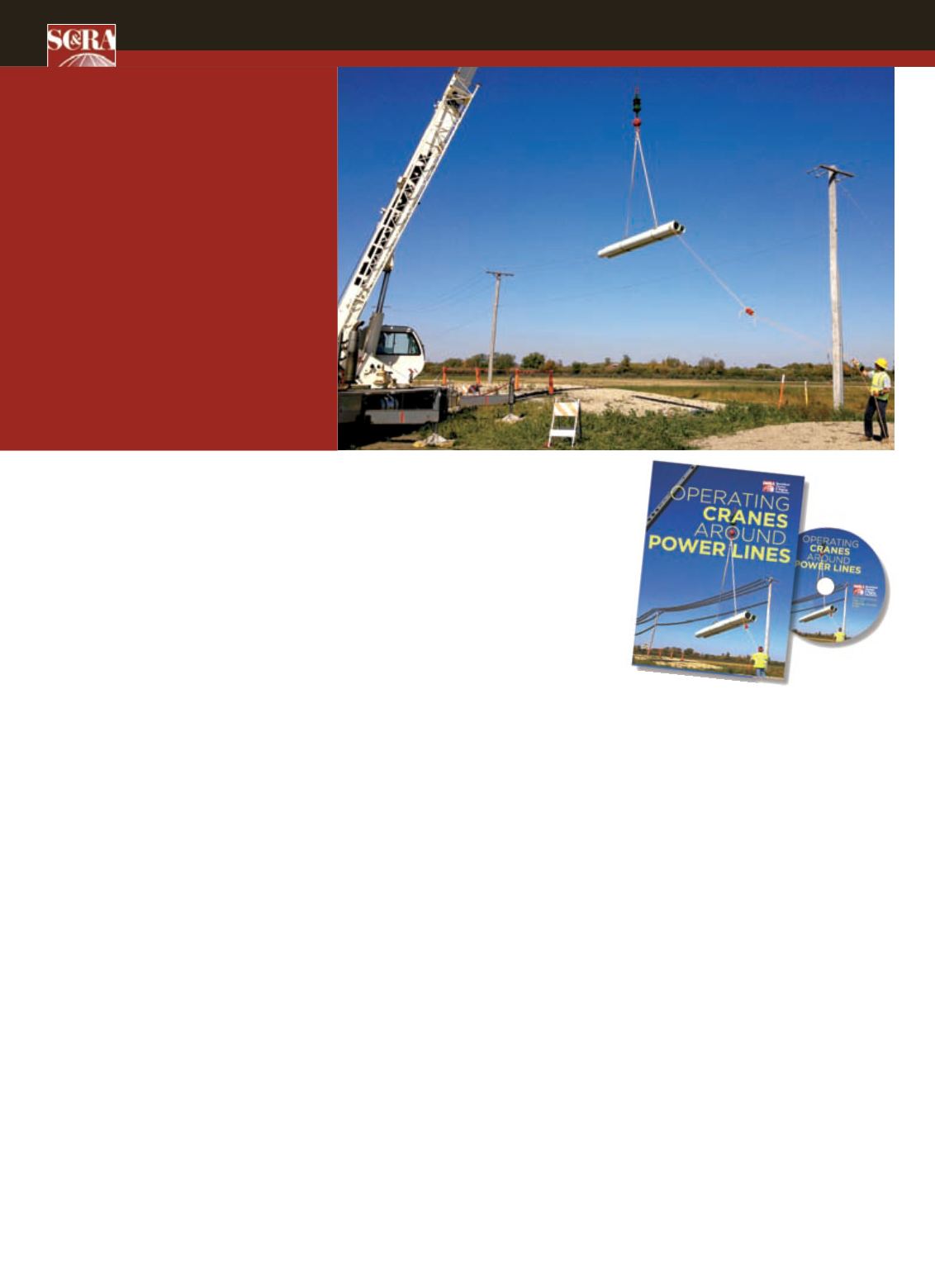
52
NEWS
ACT
AUGUST 2013
New ‘Power Line
Safety’ video
T
he new Power Line Safety video
provides a visual demonstration
of safe operating procedures,
in accordance with the Occupational
Safety and Health Association (OSHA)
standard for mobile cranes near and
around power lines, to be used during
training and the planning process. The
booklet contains an in-depth look at how
employers and operators can conform
to the OSHA standards now in effect, 29
CFR 1926 Subpart CC. A primary goal of
the standard is to reduce the incidence of
electrocution, which historically has led
to a significant number of fatalities among
construction workers. The booklet offers
a comprehensive guideline, complete with
relatable graphics, developed to educate
and easily accompany operators on the
road or on-site.
Whereas the booklet is a valuable
supplement to the video, and an easy
resource on the job site or in the
classroom, the video allows employers
to directly address pertinent safety
issues with employees or other industry
professionals during training sessions and
educational seminars.
Some of the safety headlines in the video
include:
■
Assembly or disassembly of a crane near
a power line:
Confirming the lines have
been de-energized. Recognizing clearance
requirements. Determining the line’s
voltage and the minimum clearance
distance permitted. Conducting a planning
meeting with the assembly/disassembly
director and crew to review locations of
the lines and the steps to be implemented
in the process.
■
Precautions to take when operating a
crane near a power line:
Use of non-
conductive materials. The materials used
on the project should offer high resistance
to the passage of current under the
conditions of use. Additional measures –
dedicated spotter(s), proximity alarm(s),
range-control warning device, range-of-
movement prevention device to prevent
encroachment and an elevated warning
line, barricade or line of signs in view
of the operator (equipped with flags or
similar high-visibility markings).
■
Where to post warnings:
There must be
at least one electrocution hazard warning
conspicuously posted in the cab in view of
the operator (except for overhead gantry
and tower cranes) and at least two on the
outside of the equipment. Remember to
assume the lines are energized.
■
Encroachment prevention measures and
options:
Conduct a planning meeting
with operator, crew and all workers who
will be in the area. Make sure tag lines
are non-conductive. Erect and maintain
elevated warning signals and high-visibility
markings. If/when operator is unable to
see these markings, a designated spotter
must be used.
■
Spotters and alternative measures to
spotters:
A spotter must be equipped
with a visual aid to assist in identifying the
minimum clearance distance. The spotter
must be positioned effectively gauge
proper clearance distance. When needed,
spotter should use equipment that allows
direct communication with the operator.
The spotter should give timely information
to operator, to ensure proper clearance
distance.
■
When operations can take place under a
power line:
No part of the equipment, load
line, or load is allowed below the power
line unless the employer has confirmed
the utility owner/operator has de-
energized and visibly grounded the power
line.
■
OSHA’s training requirements:
The
employer must evaluate each employee
to confirm the employee understands
completely the proper safety measures
required to ensure the safety of everyone
involved on the project. Refresher training
must be provided when there
is an indication that such instruction
is needed.
■
In response to the growing
number of reported
fatalities in the industry
involving power lines,
SC&RA produced the video
and companion booklet:
“
Operating Cranes Around
Power Lines
.”
To purchase the SC&RA “Operating Cranes
Around Power Lines” video and booklet
please call (703) 698-0291.


